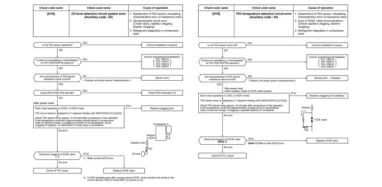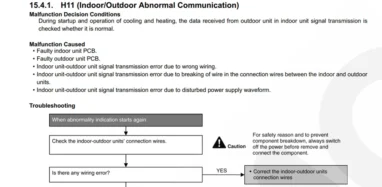When it comes to HVAC systems for your home or offices, you may have heard about various options such as air conditioners, heat pumps, boilers, furnaces, etc. Although these are probably the most common type of HVAC systems that are being used in almost all households, VRF is a term that is often used in HVAC but people have no idea about it.
The first question that may be asked after hearing VRF will be, what is VRF in HVAC?
Well, this is a thing you must know so that you can make the most out of this amazing technology that can not only help you get your desired results but save some extra expenditures as well.
If you want to know about VRF in HVAC and why they are worth considering, continue reading this guide as it will bring you information with all related facts.
What does VRF stand for in HVAC
VRF stands for Variable Refrigerant Flow and has been in the HVAC industry for some decades now. Although it has a very complex mechanism of working, it can be said that VRF is a ductless HVAC system that is built to serve in large size areas as it can perform in high capacity and meet users’ requirements to the fullest.
VRF technology as an HVAC system was initially introduced by a well-known company in Japan in the early 80s, most probably in 1982. It remained within the county border for at least 5 to 7 years and then got released in the United States of America in around 2000. This was the breakthrough that let the world know more about VRF and gave it a boost to start to rule the HVAC world.
VRF is considered one of the most efficient technologies to provide heat or cooling in medium to large size rooms, especially in Japan. A research survey concluded that more than 33% of large office rooms are using VRF technologies in Japan while this value can go up to 50% for medium-sized offices. This is the reason that VRF has made its way out in other countries in a rapid manner.
How does VRF HVAC work
You can consider VRF as an advanced version of ductless mini-splits. They either use a heat recovery system or heat pump to provide cooling or heating depending on user requirements without requiring any ductwork.
The best thing is the outdoor condensing unit can allow multiple indoor units to operate and do their job. The heat recovery system can provide heating and cooling at the same time which is quite impressive.
The outdoor condensing unit has fans whose speed can be increased or decreased by adjusting the power supply’s frequency. The amount of air, heating, or cooling will be dependent on the demand of the indoor unit.
One of the major plus points of VRFs is that they can perform for a large area without requiring any ductwork or other additional components.
VRF HVAC system pros and cons
Pros:
- Various heating and cooling customizations options.
- Comes in various sizes and types which provide users with huge flexibility in choosing the product for their space.
- Extremely quiet while running.
- As the system has less weight and comes in a compact design, it is extremely easy to install.
- The system consumes about 30% less energy as compared to common HVAC systems.
- This will clearly save you money on utility bills.
Cons:
- Installation may be expensive in terms of technician costs and plumbing.
- You may need a backup heating system with VRF (only in a few cases or circumstances).
- Can only be installed by a professional and should not be done as a DIY project.
VRF air conditioning system design
- Start by creating a preliminary layout of the system.
- Estimating the refrigerant charge should be your very first step after the layout.
- Verify the standards, compliance, and analyze your room and what kind of conditions they require.
- Make adjustments to make room size favorable for the VRF system. You can connect two or more rooms if they are small in size.
VRF air conditioning system maintenance
VRF air conditioning system’s maintenance usually includes some common practices such as:
- Checking controls and adjustments.
- Analyzing the noise and vibration of the system.
- Oil refilling on a periodic basis.
- Cleaning unit regularly.
- Reading pressure in the system.
- Checking regulating elements.
- Checking gate valve.
- Checking freon pipelines.
- Take a look at thermal insulation nodes.
- Keeping drain systems clean.
A VRF system will require proper maintenance at least twice a year if it is installed at a clean place such as a house while it may need your attention every month if it is installed at a busy place such as a market or a factory.
VRF air conditioning system troubleshooting
VRF system troubleshooting is not that hard because of its compact design. The best thing is that there are only a few parts that can easily give you a reason for issues by analyzing them properly.
Piping is probably the most common issue especially if you get the services of an inexperienced technician and they use unfit pipe size while installation. The next thing is the wiring that should be analyzed as an issue in network topology, wire quality, and plugging can also result in some issues.
How do VRF heat pumps work
The working of heat pumps may vary depending on their type as they usually come in two versions, 2-pipe, and 3-pipe. Two pipe heat pumps can only provide heat or cooling at one time while the 3-pipe system can easily bring you both simultaneously.
This allows you to experience different temperatures of different parts of a building using VRF heat pumps. The BC controller is an additional component used in the 3-pipe system. It includes a gas refrigerant separator and liquid that allow the heat pump to provide cooling and heating.
As the controller and 3-pipe system can provide different temperatures in different parts of the building, VRF allows owners to have a single outdoor unit that will work for multiple indoor units according to users’ adjustments.
How does the HVAC damper work
HVAC dampers are equipped right at the mouth of the distribution point. They are placed close to this point so that they can easily push or keep hold of the air according to the requirements of the system. Pushing air into the pipe will allow the air to redistribute in varying areas especially to those who need the airflow regulation.
HVAC dampers can be manual but now motorized dampers have gained immense popularity. With manual HVAC dampers, homeowners need to regulate the airflow by twisting a screw by their hand. This practice allows them to regulate air in a specific zone.
Motorized dampers are far better as they regulate air by themselves and try to provide appropriate heating and cooling at the required places and keep the atmosphere at a level set by the homeowners or residents.
How to use HVAC dampers
As it is clear that dampers play an important role in keeping certain temperatures in a room, it is essential to know how to make the right adjustments. You should have an idea of what the steps are to bring cold or hot air into a specific room or part of the building.
Do keep this fact in mind that hot air tends to rise while cold air sinks down. Just know that the attic or upper part of your house would be the hottest while the ground floor or basement will have a cool atmosphere.
If you want to keep the house cool, you can easily get this job done by closing the dampers that go down to the house. If you want to keep your house temperature a bit hotter, all you need to do is close or adjust the dampers that are taking air upside down while the furnace is ON. This practice will keep its heat within the house while regulating perfectly.
Every time you adjust dampers to a new setting, give it time to analyze whether it is performing according to your expectations. If they are not doing well even after a couple of days, you may change their adjustment a bit.
How to charge a VRF system
- Before changing a VRF HVAC system, it is highly recommended to evacuate it properly. It is best to remove all the contaminants, dust, and moisture from the system. It can take from 30 minutes to an hour depending on the size and related factors.
- The evacuation process can be done by letting the system run for at least a couple of hours before going for a charge.
- If you go for a low-side charging, simply attach the gas source to the gauge service port and let the gas get inside the system. Make sure that you keep the canister straight so that only gas can go through it.
- Keeping the HVAC system OFF during the charging process is no doubt essential and showing any carelessness can lead to issues.
- While charging from the high side, the gas canister will be placed upside down so that only the intended liquid gas can enter the system and get the job done efficiently.


